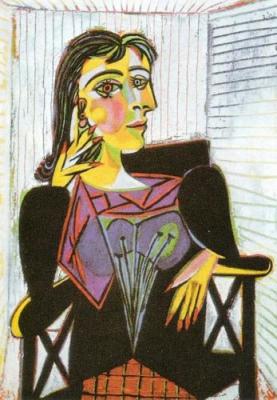Steve Jobs would be very happy, but what about Da Vinci? The technological world is quickly taking over our day-to-day lives, whether an app helps deter one from procrastinating, or an app that supplies recipes for dinner, if there is a need, there is probably an app for that. The app world has slowly been creeping up in our world, and now it is affecting our arts
As we grow in our technological world, things are expected to go digital; but can we please draw the line at digitizing the arts? On my iPhone, I have an app called “Louvre”, and as one would expect, the app displays many of the paintings on display at the Louvre. On the side of a selected painting, the viewer has the option of reading “About the work”, “Technical information”, and “Location”. This particular app was free, but the recent price of digital art has spiked. Artists including Damien Hirst, Isaac Julien, Shepard Fairey and Wim Wenders have recently created limited edition digital works for a web platform, with Prices ranging from £5 to £500. The capability to now globalize some of the greatest artworks, both old and new, faces possible art enthusiasts with an interesting dilemma. Can we substitute the real masterpiece with a pixelated version delivered directly to the palm of our hands?
Yes, technology does make it simple to view the art, but what about appreciating the art? There is definitely a different experience when viewing and contemplating a piece of art when the piece is in front of you rather than from a computer screen. We can speculate this dilemma through our class’s own personal experiences. When we looked at a painting of Franz Halls in class, I saw the painting as just a picture that was in front of me; there was no excitement or feeling of being in the presence of greatness. Though my sentiment immediately changed when we went to the Metropolitan Museum of Art and I saw the painting in front of my eyes. Just by being in front of the painting I was able to see how each brush stroke worked, and I suddenly had the ability to appreciate the tiny details that the digital copy could not accomplish. Even if the digital picture could see the intricate details, the ability to admire the minor discrepancies and then to step back and see the picture as a whole elevates the painting to a different level that cannot be accomplished in some app or Google image.
Science has even decided that the real artwork is the only real way of experiencing art. In the book Blink, a study is referenced, in which people were able to determine that a certain statue was fake based on just a first glance, even though scientific research was thought to have proven otherwise. This study can then be applied here, where our brain can tell that the artwork is not the real thing when looking at it online, but when viewing the real piece, a true sense of excitement should take over a person. As an example of the excitement we feel when seeing the real thing, when a person has a certain role model, one can look at pictures of him/her endlessly, but when offered a chance to speak to the role model, a person would probably freeze up in awe of standing in front of the person he/she has dreamed about for so long.
Technology has brought with itself, both up and downs. Now, many people who have thought that they would never be able to see the Mona Lisa are as close to it as just downloading an app. People can now appreciate and have knowledge of great works of art; but the true appreciation, I think, cannot be accomplished until seeing the piece in front of you. The digital age has allowed us to broaden our knowledge of the arts, but we have to remember that the art itself is awe-inspiring. My parting message to all of you reading this, is to go out there and take advantage of the opportunity you have to see the arts for what it is, inside the museums; for it is only a train ride away.













